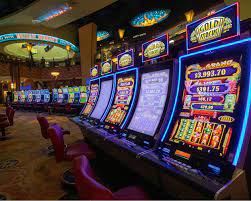Keno is the game that was initially developed in China and was brought to the USA byufugi in the early 1900s. In China, the game is known as “The sampling game” and the name of the object of the game is “To sample the numbers that were drawn“.The logic of the game is revolving around the logic of taking the odds of winning in a lottery game and turning it into a game of chance. In the “outside” of the game, the numbers are randomly picked out by the random number generator and in the “inside” – the numbers are displayed.
The play begins by playing the bet box, choosing the minimum and maximum number, and clicking “Begin Play” or “Call Deal”. If ever the player goes over the minimums he can forfeit the wager by turning the bet tray around to indicate to the dealer that he wants to quit, but can continue playing by clicking “Stand”. In either case the game is over when the player has either won or lost the amount of money he wagered.

Working from these basics, you can develop your own strategy as to when to play, basically how much to bet, and how often. For example, on a point of six or eight, although you’re almost never guaranteed a win, you’re in a lot better shape if you bet a lot more, in the hope of maximizing your payouts. Likewise, although in an eight spot like this you’re not guaranteed to win, you’re in a lot better shape by betting a lot more, in the hope of improving your odds of winning (as well as your chances of recovering your losses).
The strategies of playing Keno, whether you’re playing the game offline or online, are virtually the same. If you remember the statistics and odds, you’re in a golden position to win – just as long as you’re able to follow the advice of the advice you’ve received.
Understand the game
Before playing Keno, it’s important to make sure you understand the rules, and the objective of the game. Unlike other games that you might play in, winning Keno actually Says so. When playing Keno, you’re trying to track down the 24 spots that are in the twenty-four reel, and identifying them, once you’re done, in addition to, the number of spots that have not been played. There are several different ways to accomplish this, but essentially you will have a list that you will count across, and by how many spins it will take to “Verify” the list. During this process it will be your job to keep track of the number of times each group or number has run, and then determine if it should be played now, or later. Don’t be fooled into thinking you’re going to win tonight’s Keno; a list of RB means nothing unless it’s backed up with a physical count.
Recognize numbers, and different groups
Use a pen and paper to note down the numbers as they appear, and separate each group into its own column. According to the listing in the game, there are 24 spots that don’t have numbers, and their groups are RB, WS, WH, FC, and NL. What this means is, there are twenty four numbers in the wheel, and of these, 11 are on the outside (western, colored) and eleven slots are inside (numbers, black). By having a column for each, you make it easy to recognize numbers as they’re going by. The more you have done this, the easier it will be to recognize numbers as they appear. This may take some practice, but soon, you’ll be recognizing numbers every time they are called.